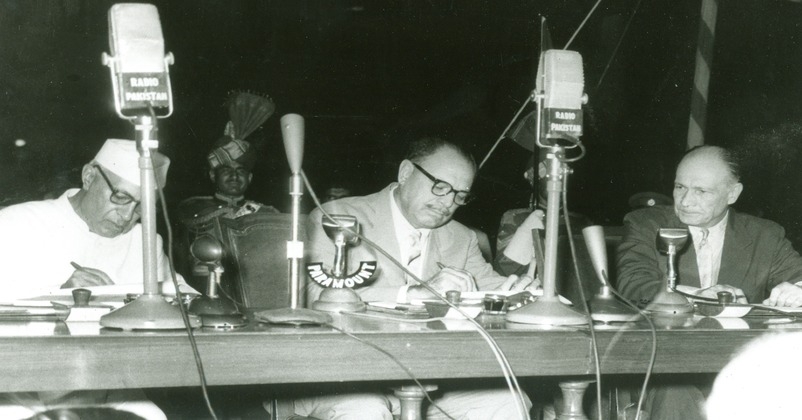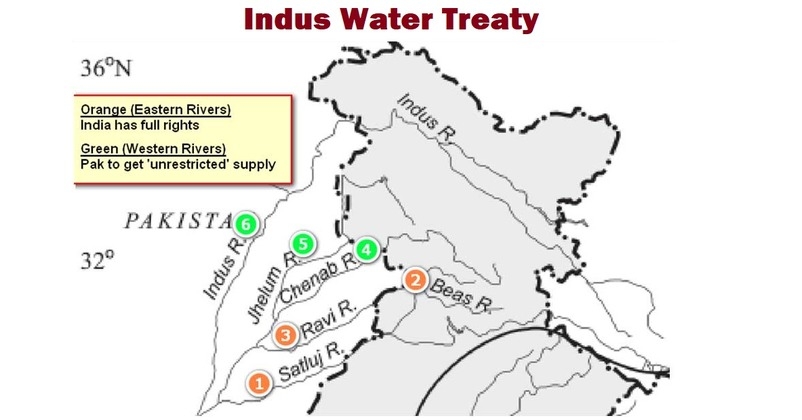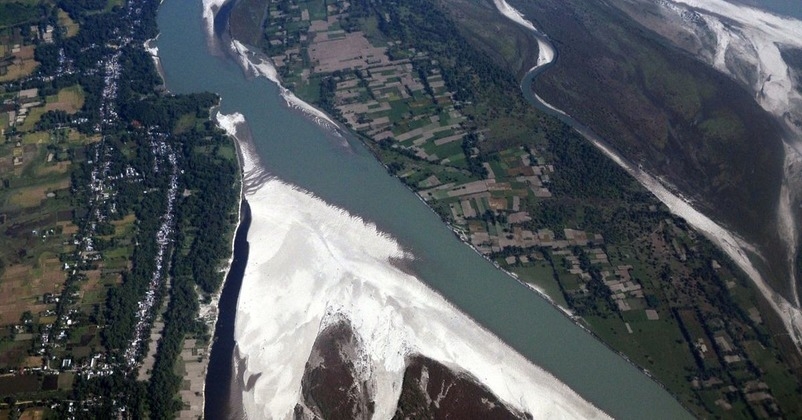Gadkari warns Pakistan to cut Indus Water flow, Here are FACTS showing Anti-India Features of Indus Water Treaty
| 09-May-2019 |

Pt. Nehru signing Indus Water Treaty
By Sant Kumar Sharma
Senior Cabinet Minister Nitin Gadkari has issued an open warning to Pakistan that it needs to turn off the tap of terrorism flowing from within its boundaries against India. Or else, India will be forced to turn off waters flowing in the rivers flowing from India to Pakistan.
Speaking at Amritsar in support of BJP candidate Hardeep Puri, Gadkari cautioned our western neighbour that it should stop promoting terrorists against India. He said that the basis of any agreements or treaties is friendly relations and trust between countries. Since there was little trust and friendliness between the two countries, there was no reason for India to carry o the burden of adhering to Indus Waters Treaty (IWT), he said.
Incidentally, the IWT was signed on September 19, 1960, at Karachi between then Pakistani President Ayub Khan and Indian Prime Minister Pandit Jawaharlal Nehru. Under this Treaty, the six rivers of the Indus basin were divided between India and Pakistan. Three rivers the Satluj, the Beas and the Ravi were called the Eastern Rivers and allotted for exclusive use by India. The waters of three other rivers of the basin, the Chenab, the Jhelum and the Indus were allotted to Pakistan, with India being given restricted rights for production of hydropower on these regions.
It bears mention here that the Treaty has so far withstood the wars of 1965, 1971 and 1999, besides the terrorism fostered by Pakistan in Jammu and Kashmir since ending 1989. The Parliament attack of December 2001, Mumbai terror attacks of 26/11/2008, Pathankot terror attack, Uri attack of September 2016 and the recent Pulwama terror attack of February 14 this year have created very hostile relations between the two nations.
We also need to think and analyse as to how and why the Treaty has withstood the severe strains of repeated wars and low intensity conflict going on for almost three decades. The most plausible reason of the treaty surviving these conflicts is perhaps the fact that it is overwhelmingly in favour of Pakistan. In terms of allocation of waters, Pakistan gets 135 MAF (Million Acre Feet) of waters and India gets only 33 MAF of Indus basin rivers.

Info Map of Indus Water Treaty
This also means that percentage wise, Pakistan gets 80.52% of waters and India gets only 19.52% of waters under this Treaty. On the face of it, this one-sided nature of the Treaty is the reason why those in favour of the continuation of the Treaty never discuss it openly. The uneven distribution of waters is not a very well known fact among the masses in India.
A beginning has already been made by the Central government in stopping the waters of the precious waters that went to Pakistan territories from Ravi, Beas and Satluj, three rivers allotted to India. Substantial quantum of waters flows from these rivers to downstream areas of Pakistan though India has all legal rights under international law to utilise them fully in its own territory.
Of the three Eastern Rivers, large quantities of waters are presently flowing into Pakistan territory from Ravi downstream of Madhopur headworks. The Central government, under the Ministry of Water Resources (MOWR) headed by Gadkari, has decided to hasten the completion of Shahpur Kandi Barrage project by declaring it as a national project. Earlier, it was a state project to be carried out jointly by Punjab and J&K governments.
The effect of declaring it as a national project is that neither of the states involved in the project will have to spend own money on it. Most of the expenses will be borne by the Centre for creating a barrage at Shahpur Kandi which will divert and stop about 2 MAF of waters of Ravi river. So far, Pakistan has been getting these waters as a sort of bonus flows, in addition to the 135 MAF allotted under the IWT. The water of Ravi river will be diverted to the farmers of Jammu and Kashmir in Kathua, Hiranagar and Samba areas, the farmers of Punjab and Haryana.

Simultaneously with it, a major project is being worked out on Ujh river, a tributary of Ravi river. This multipurpose project will be completed at an estimated cost of Rs 5,850 crore and is also aimed at stoppage of waters flowing into Pakistan. According to some estimates, the total quantum of water diverted away from Pakistan from the Ujh will be around 0.58 MAF. The MOWR had issued a press statement through PIB (Press Information Bureau), Delhi, regarding these two projects towards the end of February 2019 after the Pulwama suicide attack. It is still available on the PIB website and talks of 100% utilisation of Indian shares under the IWT.
The IWT was based on flows recorded in the six Indus basin rivers between 1921-22 and 1945-46 at their rim stations. The calculations were based on mean flows recorded in four quarters of April to June, July to September, October to December and January to March. Cumulatively, the mean flows of the Indus alone have been mentioned as 89.5 MAF per annum. In contrast, the mean annual flows of Ravi, Beas and Satluj were recorded at 6.4 MAF, 12.7 MAF and 13.6 MAF, which means only 33.3 MAF of waters of all the three rivers put together.
The treaty was debated in the Lok Sabha on November 30, 1960, less than two months after being signed in Karachi. In all, 10 MPs had participated in the debate, and criticised it, besides PM Nehru who defended it on the floor of the House. It was termed as a lopsided treaty by most MPs as they said that the government headed by Nehru had conceded too much to Pakistan unnecessarily. Responding to this allegation, Nehru had said that the government hoped for cordial relations with Pakistan and the apparent generosity was perhaps a price it has paid.
Apparently, the fond hopes put by Nehru on Pakistan were belied as early as five years after signing the treaty in 1965 when it attacked Jammu & Kashmir to gain physical control of the Western Rivers flowing through the state. The grand strategy of Pakistan to wrest control of all areas of J&K west and north of Akhnoor has apparently not changed. Decades of trouble-making in Jammu & Kashmir, plus recent killings of Parihar brothers and Chandra Kant Sharma in Kishtwar district need to be seen from this perspective of Pakistan trying to promote the concept of Greater Kashmir.
As part of the concept of Greater Kashmir, Pakistan has been steadfastly promoting ethnic cleansing of Hindus and Sikhs from large areas of the state. It had successfully achieved its objective in the Kashmir Valley by driving out Kashmiri Pandits decades ago. Targetted killings of Hindus in upper reaches of the Chenab, remote areas of Reasi and Ramban are all synchronised efforts to try to achieve its undeclared strategic goals of gaining absolute physical control over the Western Rivers of the IWT.